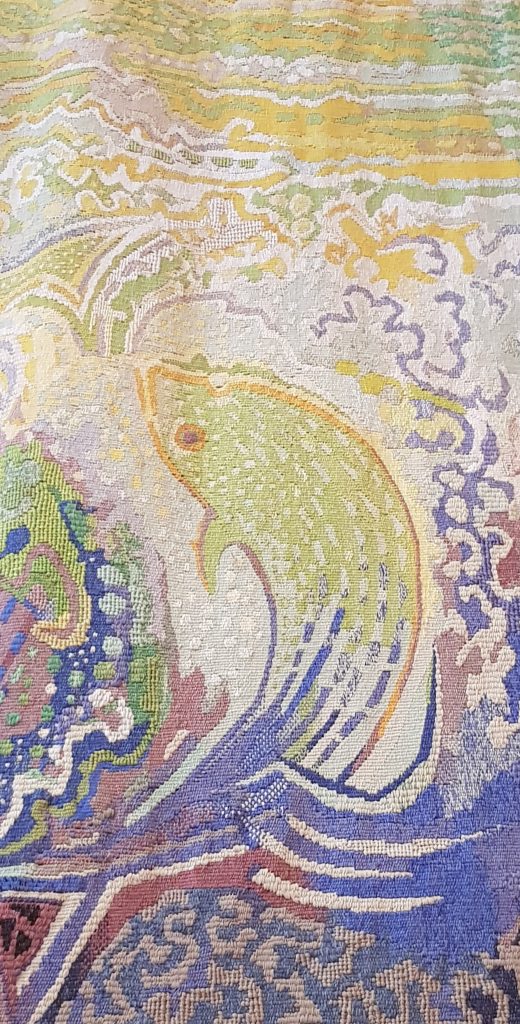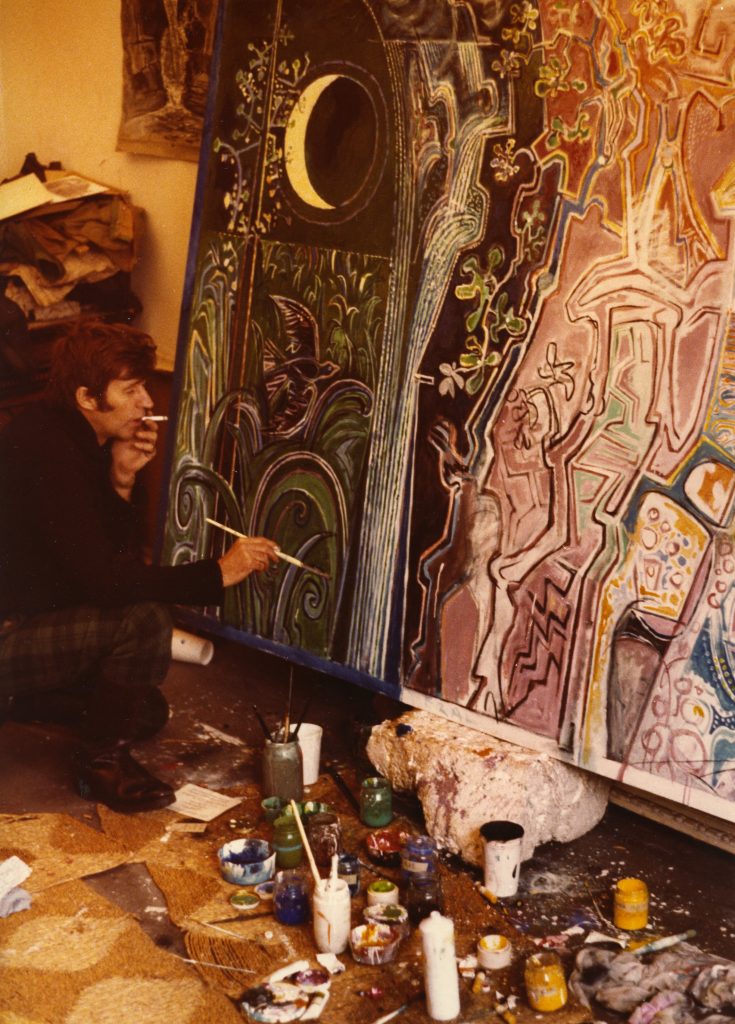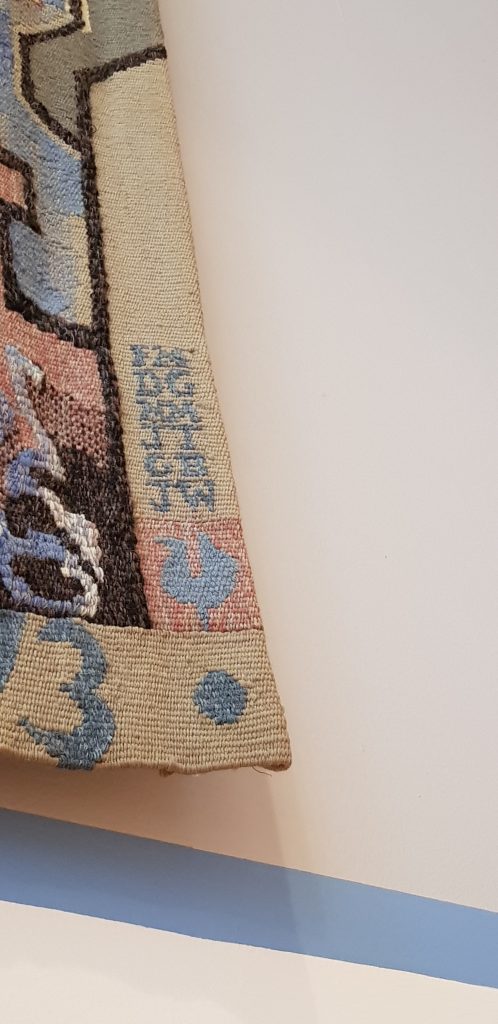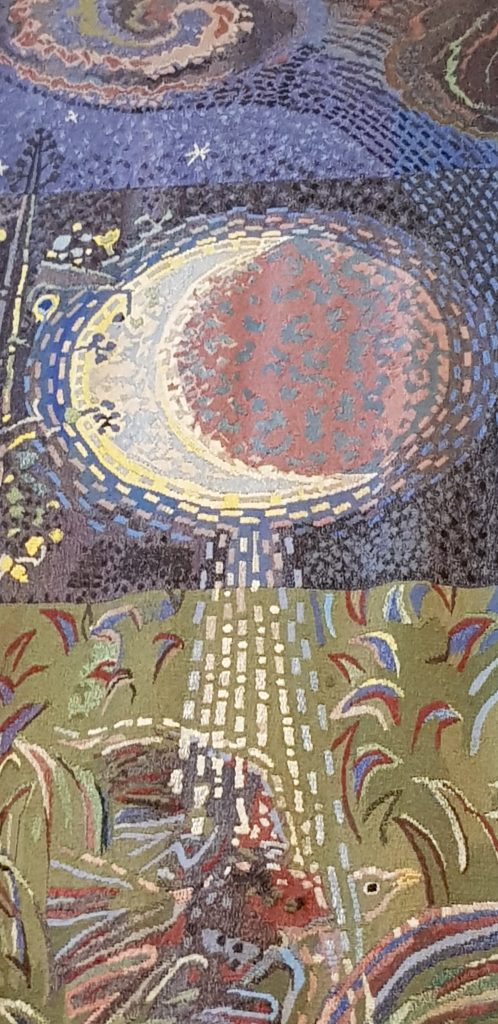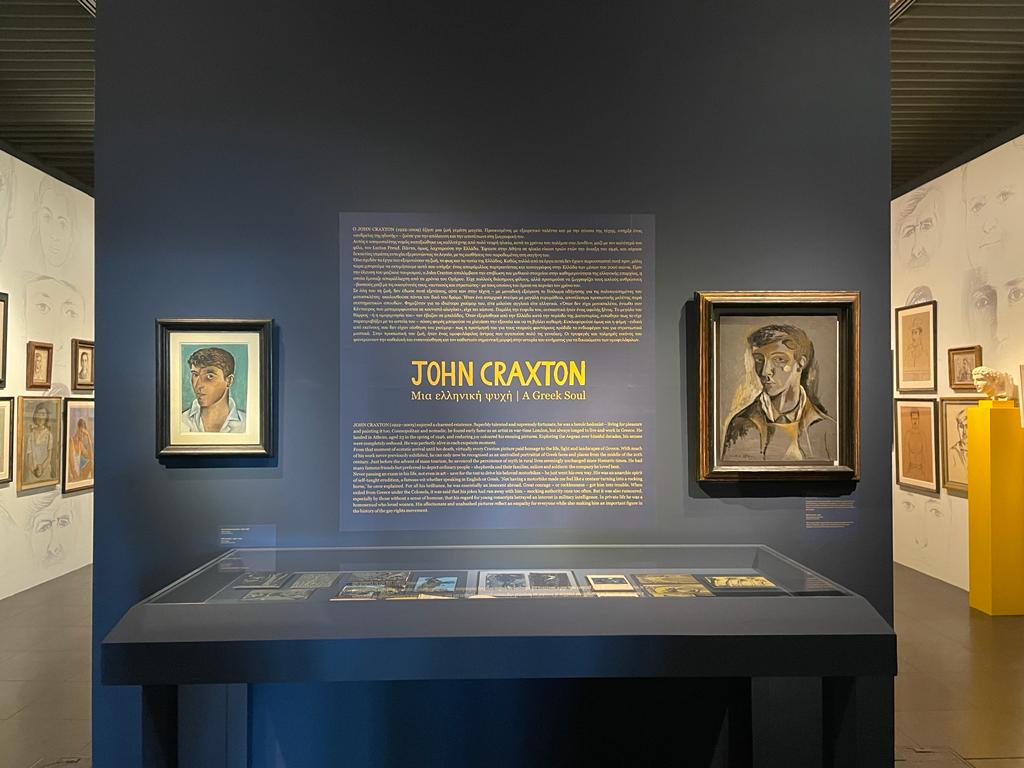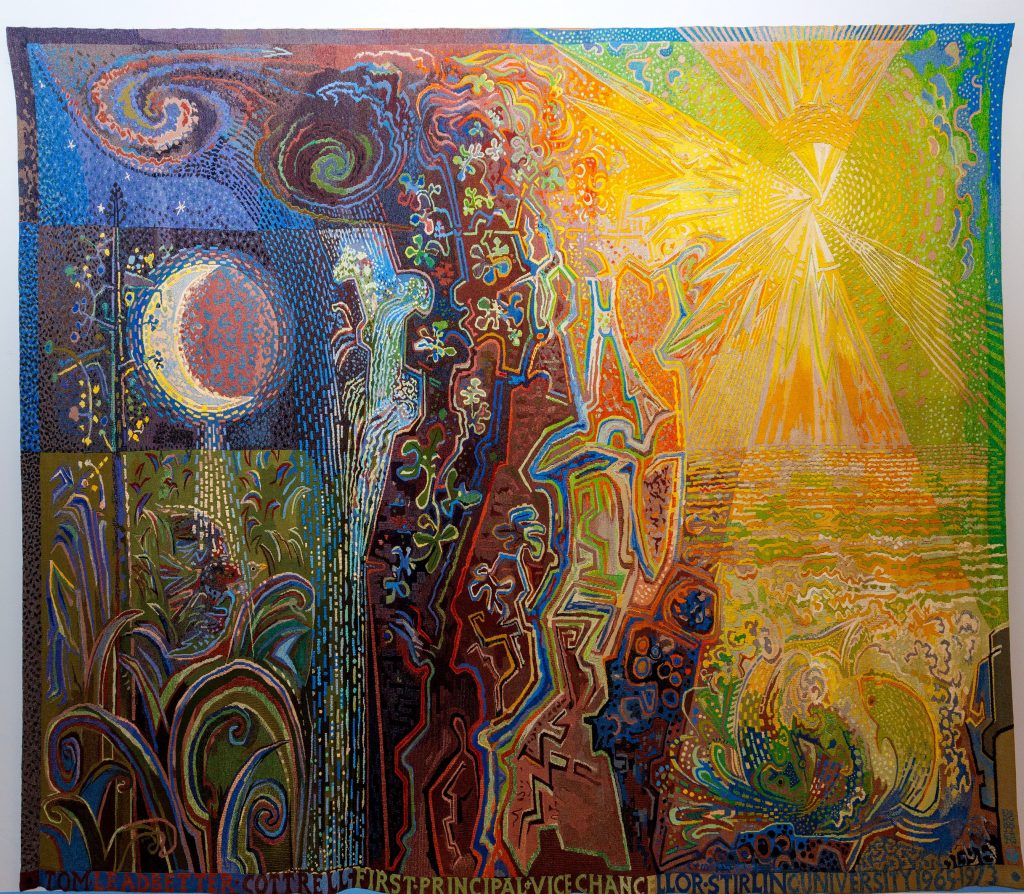
Many visitors to the Macrobert Arts Centre on the University of Stirling campus will be familiar with the sight of this beautiful colourful tapestry, hung high up on the wall around the back of the main theatre space. Not so many perhaps will know what an important artwork it is – so important in fact that it was recently removed, carefully conserved, and despatched to Greece, where it is now a star attraction in an important exhibition to mark the centenary of the artist John Craxton‘s birth.
Entitled ‘Landscape with the Elements: Cottrell Memorial Tapestry’, it was woven as a memorial to Tom Cottrell, first Principal and Vice Chancellor of the University of Stirling (1965-73).
In 1973 the artist and Tom Cottrell had discussed a possible tapestry commission for the University. After Tom Cottrell’s untimely death that same year, Craxton agreed to continue this work as a memorial. He executed the preliminary painting or ‘cartoon’ in Edinburgh and this is now in the Scottish National Gallery of Modern Art.
John Craxton was dubbed a ‘neo-romantic’ painter, although he rejected this classification. He was an admired part of the vibrant mid-20th century artist generation, and for a time a close friend of Lucian Freud, yet he became somewhat side-lined as he chose to spend his life in Greece.
His work on the initial tapestry design was protracted, as is documented in some fascinating correspondence, preserved in the University archive. Time passed, and costs spiralled exponentially.
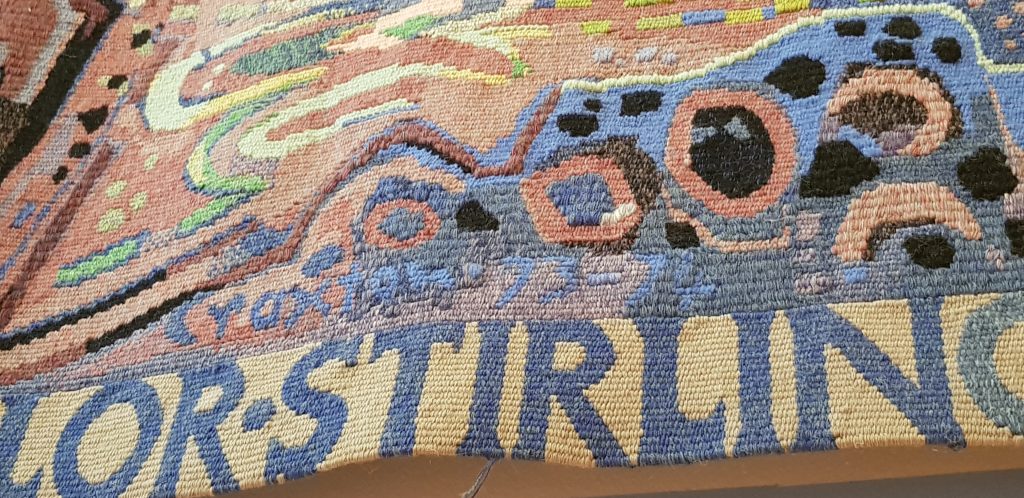
Created at the Dovecot Studios in Edinburgh, at the time it was made, it was amongst the largest and most complex woven in Scotland. Woven at six warps per inch, it took six weavers eighteen months to complete. During this period, John Craxton lived in Edinburgh and worked closely with Archie Brennan, director of the Dovecot.
Because of the large scale of the setting for the tapestry, rich weave was employed. The main complexity was in the breadth of the colour range utilised. The workshop has a range of some 500 shades and this was fully stretched, using many permutations of mixtures.
Although Craxton’s signature on the tapestry gives the date as 73-74, the completed work was finally installed in the MacRobert in the summer of 1976, after many delays and protracted negotiations. The artist chose not to attend the ceremony, after a disagreement with the University over whether it could be shown first at the National Gallery in Edinburgh. and he returned to Greece before the unveiling.
‘The sun is symbolised as the origin of life, hence the yin yang fish, as well as its geometry and order. The Moon presides over that area which is elegiac in feeling which, tragically, became a Memorial to Tom Cottrell. The centre is a hidden ‘pun’ in which a rampant goat has metamorphosed itself into a tree: it has become what it eats and, rising too close to the sun, has caught on fire. As in nature, all is changing but the narrative should not be read but seen and felt: everyone is free to interpret what he sees in his own way. The moon and the sun represent day and night to dominate the whole. Incidentally, the moon is partially eclipsed by the Earth’.
John Craxton ***
Ian Collins, biographer and executor to John Craxton adds:
“Although a tribute to Scottish craftsmanship, the Craxton tapestry is all about the seasonal and diurnal life of Greece, and especially of Crete where Craxton had lived from 1960 (and where he was able to return in 1976 and be based for the last four decades of his life). Mediterranean sun and moon dominate the changing scene. Earth is suggested by Cretan rocks, plants and tree. Air by a flying bird. Water by rain, waterfall and Aegean-like sea, and Fire by flames which have set the top of the tree alight and by smoke changing into clouds. Loving Greek mythology as much as archaeology, the artist has actually depicted a goat being metamorphosed into a tree (becoming the thing it eats) and, rising too close to the sun, like Icarus, has caught on fire. Although the tapestry is deeply personal, with an idiosyncratic iconography, it shows the enormous impact on the artist of Byzantine mosaics.”
According to Ian Collins, this work by John Craxton is rather more sombre in mood than his other work, which reflects a period in Craxton’s life when he had been banished from Greece by the Colonels, and did not know if he would be able to return. (He did in fact return in 1976).
*** quoted in John Craxton: A life of gifts by Ian Collins (2021)
‘John Craxton: A Greek Soul’ continues at the Benaki Museum in Athens until 11th September 2022.
It will then move on to The Municipal Art Gallery, Chania, Crete, opening on 3rd October, and ending 31st January 2023.
